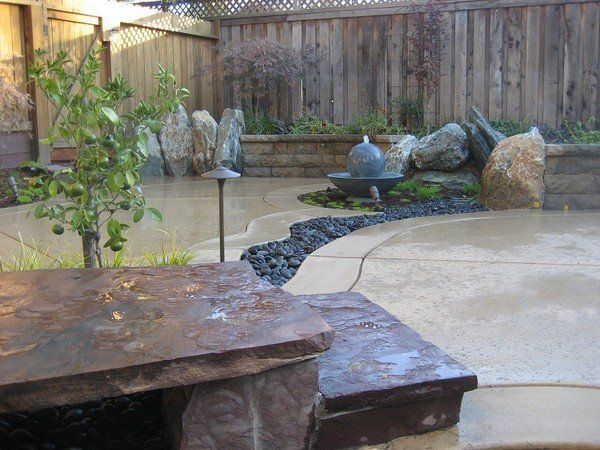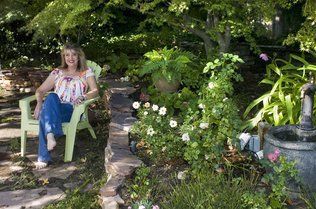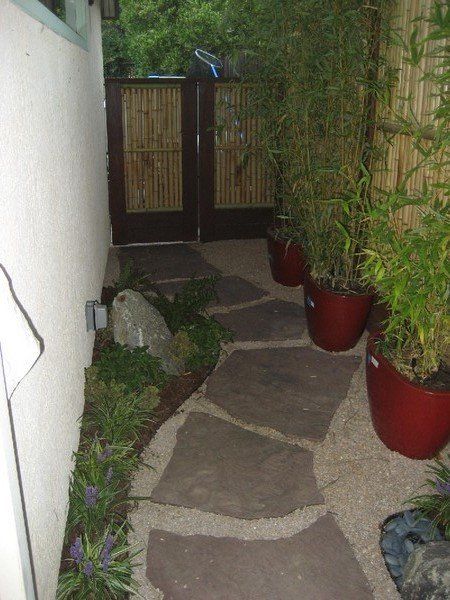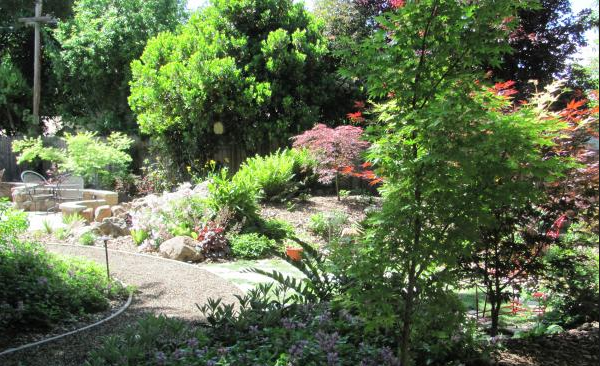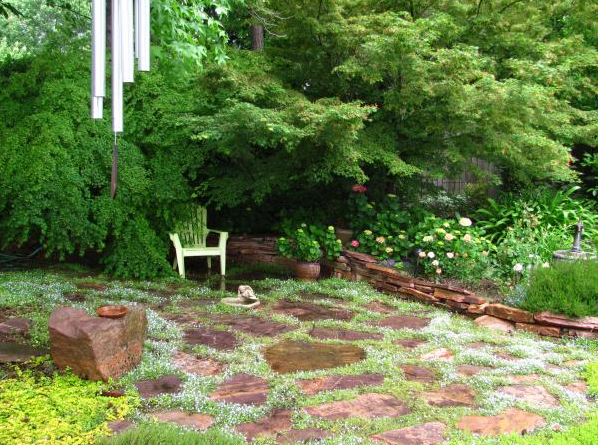A greenhouse in your garden
- By Susan Silva
- •
- 30 Sep, 2014
- •
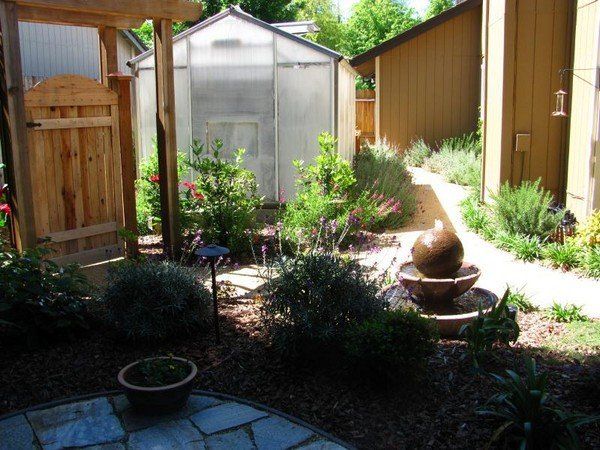
Whether you want to garden all year long or just prolong the spring and summer seasons, there’s a greenhouse just right for you and the space that you have. Regardless of the size of your backyard, a greenhouse comes in many sizes and designs imaginable, from something simple to something elaborate. Greenhouses also come in kits for the handy homeowner with easy to follow directions.
This Folsom greenhouse was remodeled, moved away from the side of the house and then nestled into a “Storybook Garden” of colorful and fragrant herbs and perennials requiring much less water than the lawn it replaced. It’s soft, meandering paths, one with a bold craftsman gate/arbor became the garden doorway which leads to the greenhouse. The nearby flagstone patio in the foreground is the perfect spot for outdoor dining and enjoying the garden while watching the birds at the fountain and bird feeder.
With fall upon us and winter approaching, a greenhouse will supply fresh organic vegetables and herbs for your home throughout the colder months. There’s nothing to compare to a great tasting salad with fresh tomatoes in January and February and will save on your family’s budget as well! Just imagine the fresh vegetables from your greenhouse that will replace the frozen grocery store varieties. Holiday meals are extra special when accompanied with vegetables and a sunny cut flower bouquet from your greenhouse.
On a cold winter’s day, the sun beats into the greenhouse and feels fantastic. It can often run 50 degrees higher in the greenhouse than outside temperatures on these cold and clear winter days. Off comes the sweater and gloves, and it is now a happy place to putter and unwind immersed in the rich and warm fragrance of fresh vegetables and blooms.
A greenhouse is not just for gardening, but can also turn into the perfect retreat for crafting, reading, and lounging with a hot cup of tea or soup. For those of us who love weather beaten farm tables, over-stuffed comfy chairs, antique chandeliers and luminaries, a greenhouse can also become the perfect cottage getaway in your very own backyard.
And, for those that love a tropical island, the greenhouse can be a piece of paradise, a winter escape, when filled with colorful and fragrant orchids as were grown in this Folsom greenhouse.
Your greenhouse will need air circulation, ventilation, and temperature control so that your plants will be healthy and productive all year long. Especially necessary in summer months, your greenhouse will also need an evaporative cooler.
This Folsom greenhouse was built by the homeowner.

It will take thirty years to replace a thirty year old tree. A lawn can be restored in just a couple of months.
Kyle Floyd, with Green Acres Nursery reminds customers that it's the lawn that is the larger culprit for consuming water and not the trees. Unlike lawn, a majority of trees can withstand drought, but still need to be properly watered based on the tree's species and size.
It's essential to understand trees and their water needs. Most tree roots are in the top eighteen inches of soil, but studies show the greatest number of tree roots consuming water, oxygen and nutrients are in the top six to eight inches.
- A general rule is to use approximately ten gallons of water per inch of the trunk's diameter (width of trunk measured at knee level) for each watering. General formula: Tree diameter times five minutes equals total watering time.
- Example: When hand watering using a garden hose at medium pressure, it will take about five minutes to produce ten gallons of water. For a four inch diameter tree, it should receive forty gallons of water. Multiply by five minutes for a total watering time of twenty minutes.
- Distribute water evenly under the tree's dripline.
Water early in the morning or after the sun has gone down. These are the times when trees restore the water lost during the day. Also, be sure to add mulch around the trees to reduce soil temperature and decrease water evaporation.
Soaker hoses and drip systems keep the trees healthy while using less water. They soak into the ground where the water is needed, and not run into the street and drains. Long, slow watering to a depth of twelve inches with soaker hoses or in-line emitter drip systems buried below three to four inches of wood mulch is often recommended. Generally in warmer months, younger trees need to be watered twice a week, and most mature trees every two weeks.
Landscape contractor, Steve Irwin of Alpine Terrace Landscaping often advises using soaker hoses placed around the drip zone (area shaded) of the tree with timers. For extra large established trees like Sequoia sempervirens (Redwoods), Steve advises watering these giant trees with soaker hoses for a twenty-four hour period every two weeks in the warmer months.
An easy and inexpensive option for deep & slow watering for very small trees is to water them using a five gallon bucket. Steve Irwin recommends puncturing a very tiny hole at the the base of the five gallon bucket (thirty-second of an inch), place the bucket under the tree's drip-line, and fill to the brim with water. This method should be done twice weekly per small tree, moving the bucket (s) when empty to other spots within the dripline.
Trees provide shade and shelter to our homes and wildlife, and most importantly trees provide the healthy air all of us need to breathe. It's critically important for our health and environment to keep our trees watered, healthy, and producing oxygen.
According to chemistry expert, Anne Marie Helmenstine, Ph.D in her article, "How Much Oxygen Does One Tree Produce?", are the following quotes from studies made of different trees regarding the overwhelming importance about the oxygen our trees produce.
"One acre of trees annually consumes the amount of carbon dioxide equivalent to that produced by driving an average car for twenty-six thousand miles. The same acre of trees also produces enough oxygen for eighteen people to breathe for a year." - NY Times
"A mature leafy tree produces as much oxygen in a season as ten people inhale in a year." - Arbor Day Foundation
"On average, one tree produces nearly two hundred sixty pounds of oxygen each year. Two mature trees can provide enough oxygen for a family of four." - Environment Canada
